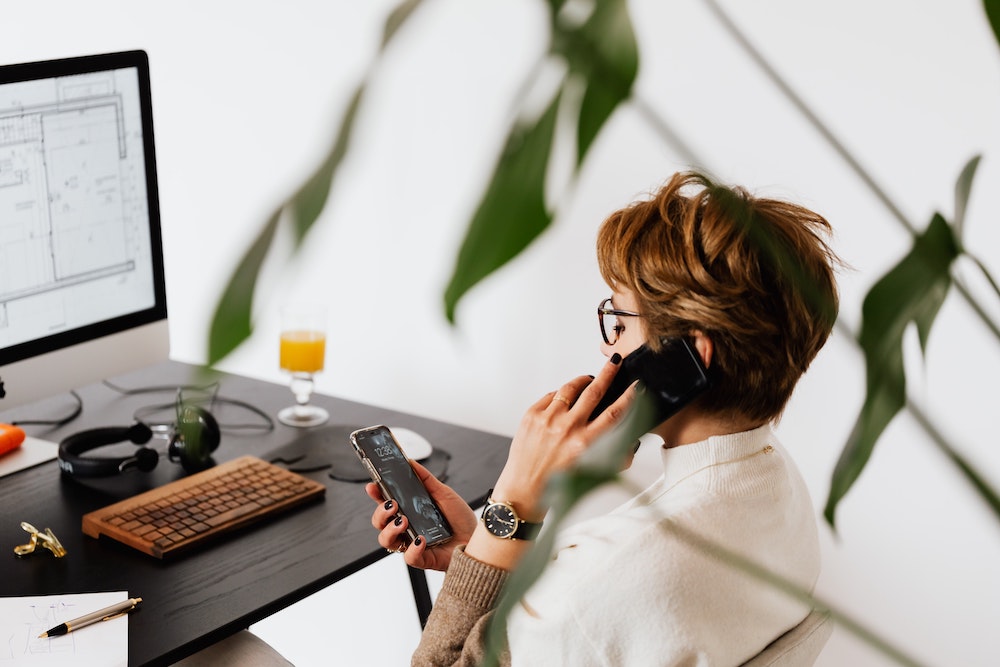Thanks to technology, we’ve now got an edge when it comes to the fight to stay healthy and safe. Digital devices are available that help us improve our diets, track our fitness, or help up with medication compliance. There are even medical alert devices that help us stay safe and summon medical help if we need it.
In addition, there are a wealth of technological advancements that have improved healthcare systems around the world. Thanks to technology, patient care has improved, patient/healthcare professional relationships have improved, and you can have medical results sent to your phone faster than ever before.
However, there is a downside to technology. For example, an increasing number of people are exhibiting signs of technology overuse, particularly in relation to smartphones. It might surprise you to learn that Americans spend nearly 12 hours a day looking at multiple digital screens. In a recent Deloitte study, 60% of US adults between the ages of 18 and 34 admitted to smartphone overuse.
The Negative Effects of Technology on Health

There’s nothing wrong with staying connected with the help of technology, but there are things you can do to counteract the side effects caused by overuse. Take the following negativities into consideration and you’ll be able to continue harnessing the power of technology to improve your overall well-being while staying connected.
Here are a few considerations around technology use and how they affect our health.
Digital Eye Strain
Gazing at a screen for long periods means we often forget to blink. Research has shown that digital eye strain reduces our blink rate by 50%. What this means is that the tears that protect our eyes evaporate without being replaced. The small font on smartphones also intensifies the strain.
Symptoms of digital eye strain include headaches, dry eyes, burning, itching, blurred vision, difficulty focusing and shoulder or neck pain.
There are ways you can combat eye strain including:
- Taking a 20-20-20 break. Every 20 minutes, take a 20 second break and focus on something 20 feet away.
- Reduce overhead lighting to eliminate screen glare.
- Position yourself at arm’s distance from the screen
- Use eyewear if needed
- Get regular eye exams
- Increase text size on devices to make them easier to read
Sleep Disorders
Digital devices have become an integral part of our lives, so much so that some people even take their devices to bed with them, for fear of missing out. It might seem like a pretty harmless habit, but technology late at night can interfere with your ability to sleep.
The National Sleep Foundation and Swedish researchers discovered a link between heavy cell phone use and increased sleep disorders in both men and women.
Exposure to artificial light between dusk and the time we go to bed at night suppresses the release of melatonin, a sleep-promoting hormone. It also enhances alertness and shifts circadian rhythms to a later hour, making it more difficult to fall asleep.
If you want to avoid disrupting your sleep, replace late-night technology with more sleep-conducive activities such as reading in bed or taking a bath.
Physical Inactivity
We tend not to exercise as much when we’re using technology such as computers, TVs, or video games. There is an increasing body of research that links overuse of digital devices to decreasing fitness and exercise levels.
Luckily, we can also use technology to solve this issue. There are plenty of fitness apps available if you need some help sticking to an exercise routine, staying motivated, and tracking your progress.
If you choose just one of them to use, it could get you enough activity to counteract your screen time and encourage you to exercise more.
Mental Health
Over three million people interact with each other over social media channels every day. On the whole, these exchanges tend to be harmless, but overusing such services can impact your well-being. Social media has been linked to a rise in mental health disorders such as depression suicidal ideation, particularly in teenagers.
Researchers have highlighted how social media platforms place higher social pressures on young people and adults and can lead to instances of cyberbullying, increased need for approval, and general feelings of discontent.
Tips for Managing Social Media Use
You don’t need to disconnect or delete your social media profiles in order to protect yourself. However, you should focus on finding a health balance that places less emphasis on digital reward systems and managing how much you use it.
Here are a few healthy ways of using social media:
- Log off from time to time and take regular social media breaks
- Think carefully about what you post and who sees it
- Limit how many social profiles you use
- Delete specific apps that might get in the way of your productivity
- Stick to a schedule for when you’re social online.
Final Thoughts
The value of technology to our values is virtually limitless, especially if you use it mindfully. It’s down to you to explore new ways to tap into its power so that it improves rather than damages your overall health and fitness.
Disclosure: We might earn commission from qualifying purchases. The commission help keep the rest of my content free, so thank you!



